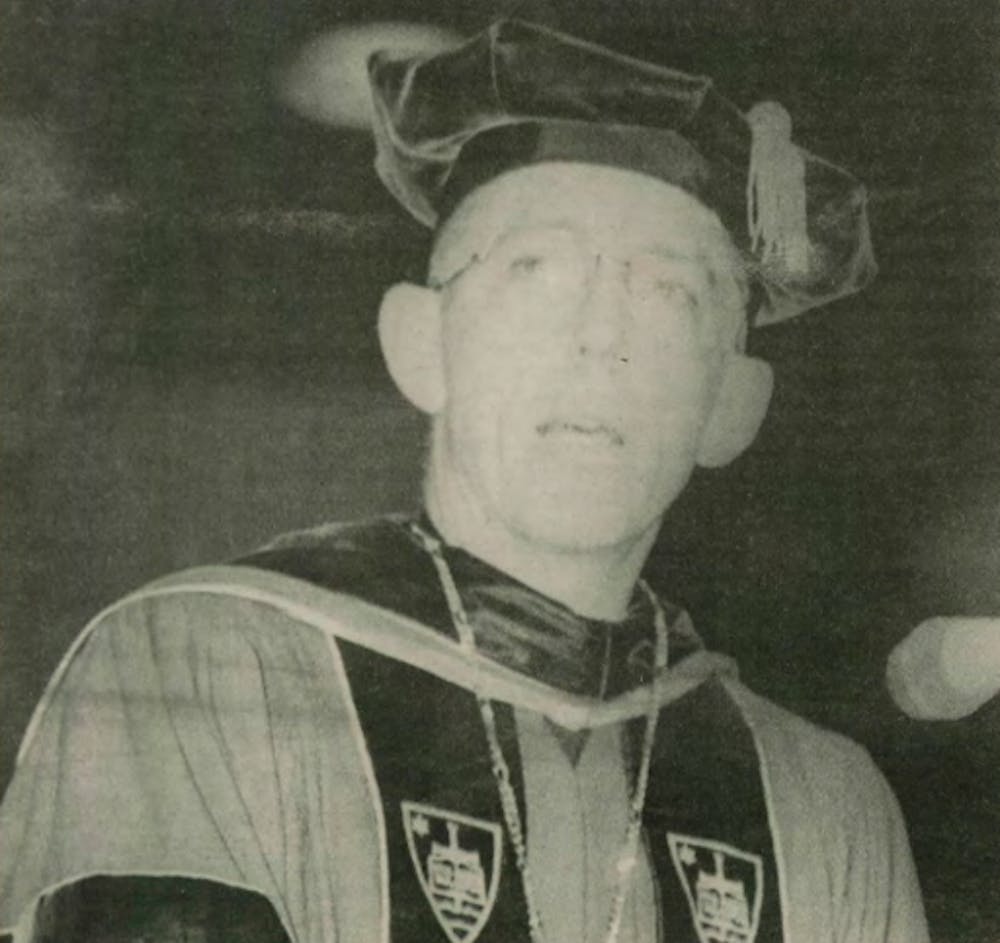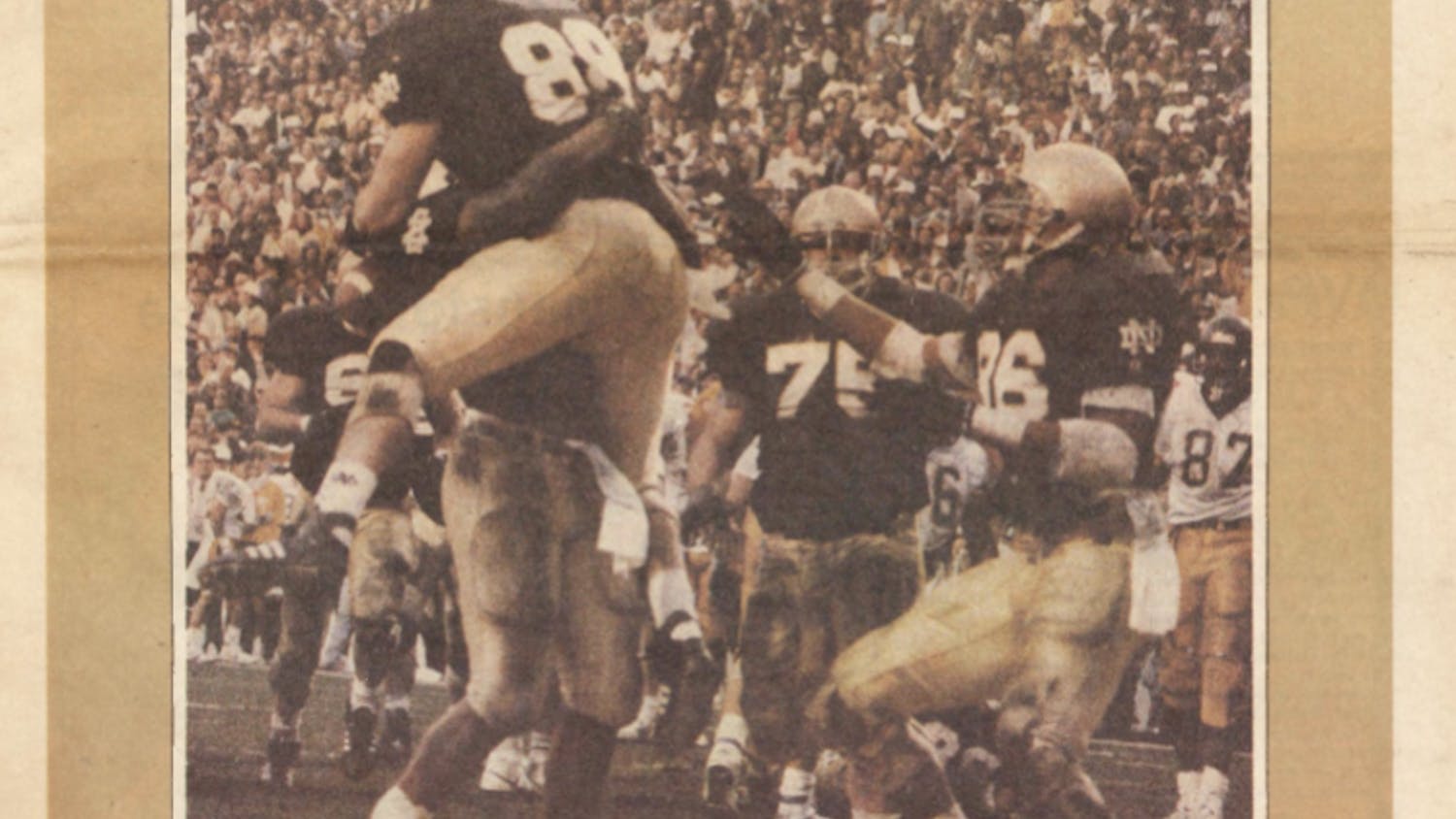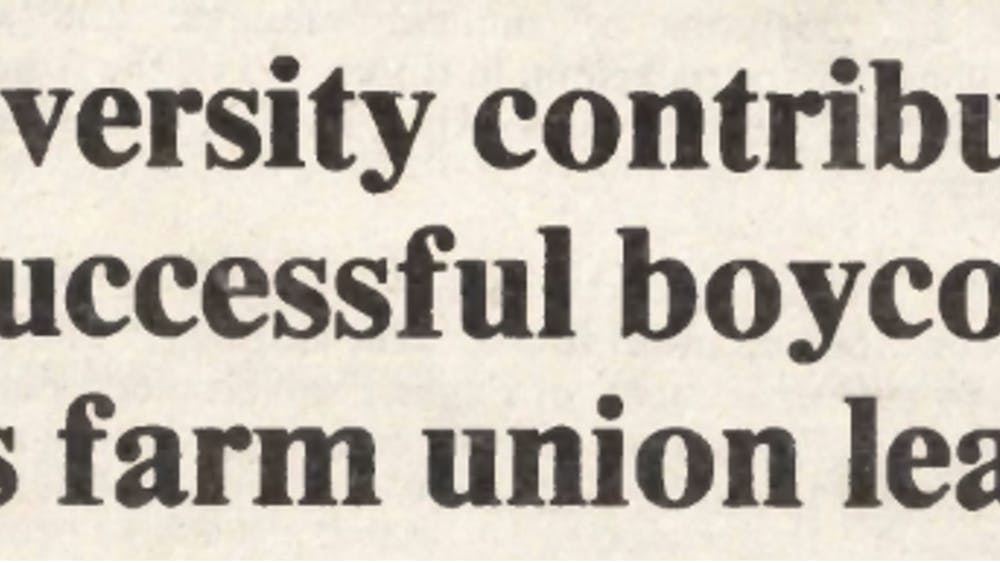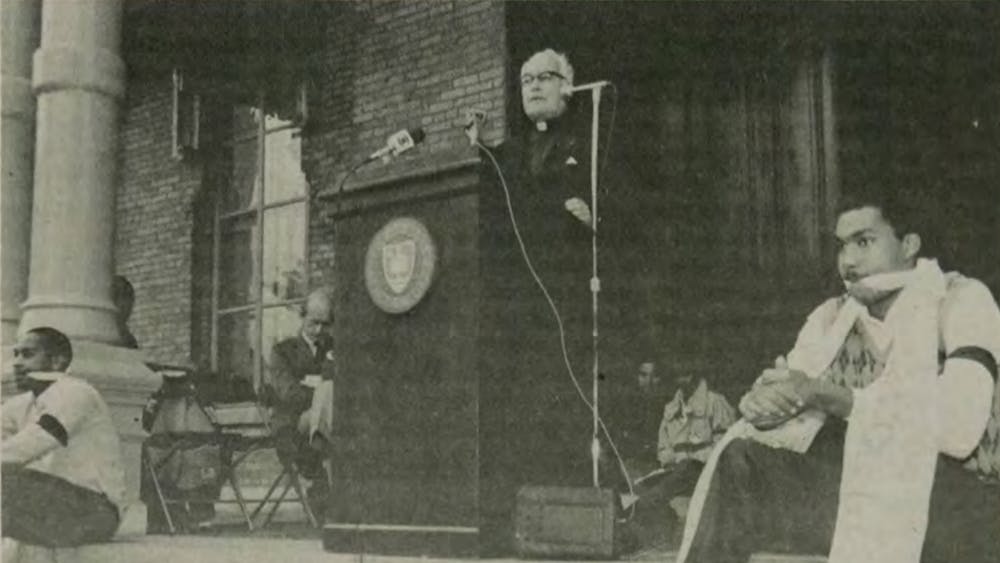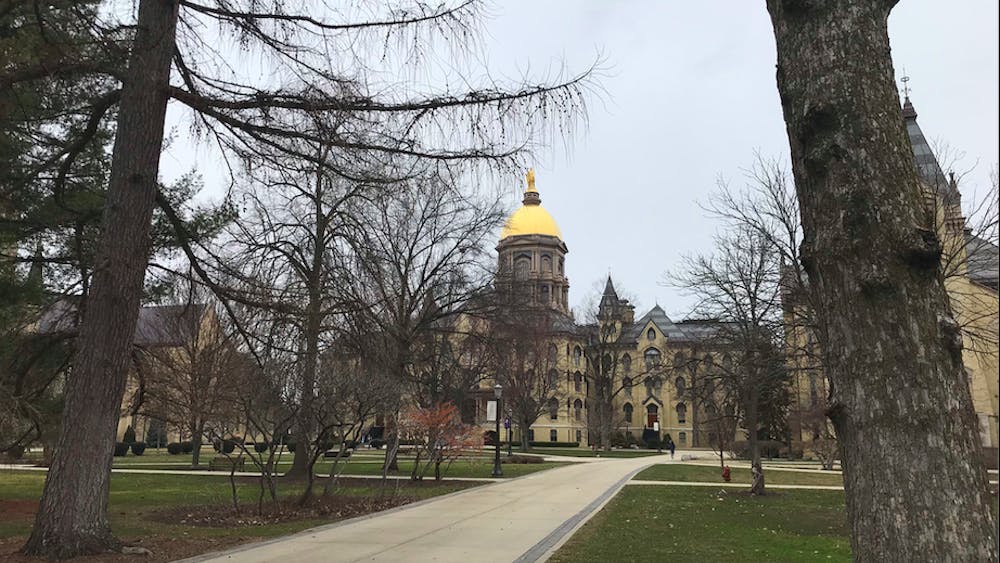Notre Dame’s presidential inaugurations have historically provided moments for reflection, celebration and new beginnings. With the recent inauguration of Fr. Dowd, we see a continuation of that tradition. From Rev. Theodore Hesburgh’s leadership in 1952 to Rev. John Jenkins’ vision in 2005, ceremonies have evolved from a speech at opening Mass to multi-day affairs involving high-profile performers. Fr. Hesburgh, Fr. Edward Malloy and Fr. Jenkins each outlined their vision for the University at their inaugurations, often touching on academic excellence and the University’s Catholic identity.
Fr. Hesburgh’s inauguration: Guiding Notre Dame’s new path forward
Sept. 26, 1952 | Scholastic Magazine | Researched by Lilyann Gardner
In 1952, Rev. Theodore Hesburgh, C.S.C., began his tenure as the newly appointed president of the University of Notre Dame, marking the 80th opening Mass with his leadership. Hesburgh, whose name now adorns the campus library, studied theology at Holy Cross College and was ordained at Notre Dame in 1943.
Hesburgh left for a brief period to complete his doctorate at Catholic University in Washington, D.C. Still, he returned to Notre Dame in 1945, where he would remain until his retirement in 1987.
His rise through the ranks was steady. He served as chaplain of Vetville (a housing area for veterans and their families on Mod Quad), director of Farley Hall, head of the religion department, executive vice president and eventually President.
Hesburgh’s presidency began with the question, “Which way Notre Dame?” as reported by Scholastic magazine. With a student population growing to 5,400 and significant faculty changes, Hesburgh was immediately faced with the challenge of steering the University forward.
During the opening Mass, Fr. Hesburgh addressed the students and staff and described the physical and spiritual evils that had to be overcome for mankind and Notre Dame to thrive.
“True Catholic wisdom in which men have the common sense to live lives ordered to purity and peace, not the material, professional wisdom: dispensed at so many of our schools today,” he said.
Fr. Hesburgh’s unwavering confidence and faith in God’s presence at Notre Dame made him one of the most influential priests of his time, cementing the University’s reputation as a leading academic institution.
Fr. Edward Malloy’s inauguration: Catholic identity and academic vision
Sept. 3, 1987 | Pat Healy | Sept. 24, 1987 | Chris Bednarski | Researched by Thomas Dobbs
On Sept. 23, 1987, Rev. Edward A. “Monk” Malloy, C.S.C., was inaugurated as the 16th president of the University of Notre Dame.
As the first president to receive a formal inauguration, Malloy set a precedent by using his address to lay out a vision for his presidency, emphasizing Notre Dame’s Catholic identity while championing academic freedom and a commitment to service.
Malloy affirmed the University’s religious mission, stating, “Notre Dame has a mission of service to society and the Church,” and vowed to preserve its Catholic character.
“Notre Dame will continue self-consciously and proudly proclaiming itself to be a Catholic university,” Malloy said, while also stressing the institution’s openness to diverse perspectives. “Notre Dame is an open forum where diverse viewpoints can be freely and critically discussed.” This balance between faith and academic excellence became a central theme of his presidency.
Also emphasizing the importance of teaching, Malloy said, “It is not acceptable at Notre Dame to engage in teaching in a perfunctory or indifferent fashion. Our students deserve a total commitment of their mentors to providing a lively and stimulating educational environment.”
This focus on academic rigor extended beyond the classroom, as he prioritized academics over athletics, noting, “We will attempt to excel in every form of intercollegiate athletics, but not at the price of distorting our primary role as educators and moral guides.” Interestingly, Notre Dame won its most recent football national championship the very next year, in 1988.
Malloy’s key priorities included significant investments in research, computer facilities and the University Libraries, alongside a commitment to combating inequality within the Notre Dame community.
In a striking parallel to the present, the front page of The Observer on Sept. 24, 1987, not only highlighted Fr. Malloy’s inauguration but also carried an AP story announcing Joe Biden’s withdrawal from the 1988 presidential race. This moment foreshadowed events 37 years later, when Biden again stepped back, this time from the 2024 contest.
Fr. Jenkins’ inauguration: Tradition and progress
Sept. 22, 2005 | Katie Perry | Sept. 23, 2005 | Mary Kate Malone | Sept. 26, 2005 | Observer Staff | Researched by Alyssa Sirichoktanasup
Rev. John Jenkins was inaugurated as Notre Dame’s 17th president in September 2005, launching a series of celebratory activities across campus. In his inaugural address, Jenkins emphasized the University’s Catholic identity and the unique educational perspective it offers.
“I don’t think Notre Dame needs a radically new direction,” Jenkins remarked. “It needs an understanding that it has a distinctive role to play in American education, and it’s got to realize that and play it in the best possible way.”
As part of the inauguration, a forum featuring global changemakers and religious leaders explored the role of faith in a global context, echoing Jenkins’ theme of integrating faith and education.
However, Jenkins also outlined several areas for development, focusing on undergraduate research, improving faculty standards and increasing diversity within the University. He placed particular emphasis on boosting the number of women in faculty roles, noting that diversity is essential to Notre Dame’s character.
His remarks paralleled Fr. Malloy’s promise to “recruit female faculty members in all disciplines and to promote women to positions of administrative responsibility.”

Many of Jenkins’ inaugural activities were arts-oriented, making full use of the newly opened DeBartolo Performing Arts Center. Activities included a poetry cafe night featuring local spoken-word poets and blues musicians, live music performances at six venues across campus and screenings of “Babette’s Feast,” one of Father Jenkins’ favorite films, in Browning Cinema.
A highlight of the festivities was a performance by acclaimed pianist Leon Fleisher, who, despite a neurological condition affecting his right hand, garnered two Grammy nominations and performed with major orchestras such as the San Francisco Symphony and Berlin Staatsoper. Fleisher performed in Leighton Concert Hall with the Notre Dame Symphony Orchestra and choral groups as a kickoff to Jenkins’ inaugural activities.

